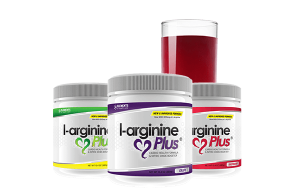High blood pressure affects millions of people, but what is normal blood pressure for a woman? Let’s find out.
Only about half of women with high blood pressure have it under control, according to the American Heart Association. While the goal is to maintain a healthy blood pressure range, not everyone knows what a healthy range looks like. Moreover, healthy blood pressure may change based on sex, race, genetics, and lifestyle habits.
Blood Pressure Numbers
 Hypertension happens when there’s more pressure than normal in your blood vessels. This is measured by the force of the blood against the wall of your blood vessels.
Hypertension happens when there’s more pressure than normal in your blood vessels. This is measured by the force of the blood against the wall of your blood vessels.
When you check your blood pressure, the monitor shows two numbers: systolic blood pressure and diastolic blood pressure. Systolic blood pressure is when the heart is contracting and is the top number on the monitor. Diastolic blood pressure is when the heart is relaxing and is the bottom number.
The following are blood pressure ranges and what the numbers mean, according to the American Heart Association (AHA):
- Normal blood pressure: less than 120/80 mm Hg
- Elevated: 120/80-129/80 mm Hg
- Stage 1 hypertension: 130/80-139/89 mm Hg
- Stage 2 hypertension: 140/90 or higher mm Hg
- Hypertensive Crisis: higher than 180/120 mm Hg
Risk Factors in Women
High blood pressure is the “silent killer” because it tends to come without symptoms. If you believe you might have high blood pressure or a risk factor, talk with your doctor.
Furthermore, you may have non-modifiable factors that affect your blood pressure. These are factors that you cannot control and include age, race, and family history of high blood pressure. Your risk of hypertension may increase with age, if your parents have high blood pressure, and if you’re African-American.
Conversely, there are modifiable risk factors you may be experiencing; these are factors that are within your control. Some of these risk factors include obesity, lack of physical activity, a diet high in sodium, smoking, and excessive alcohol use.
To illustrate, obesity causes more pressure in your blood, lack of physical activity makes your heart work harder, and smoking damages arteries. Additionally, having too much sodium in your diet and drinking too much alcohol raises your blood pressure.
Improving Blood Pressure
 Now that you know what the different blood pressure ranges mean, you can work to keep your blood pressure at a healthy range. This can include making lifestyle changes that include regular exercise and a healthier diet.
Now that you know what the different blood pressure ranges mean, you can work to keep your blood pressure at a healthy range. This can include making lifestyle changes that include regular exercise and a healthier diet.
If you have high blood pressure, you may be taking certain medications to keep your blood pressure under control. You can also try health supplements that can improve your circulation, like L-arginine Plus.
It’s a heart supplement that increases nitric oxide in the body, a compound that improves blood flow. After taking it, you may experience lower blood pressure, higher energy levels, and a boost to your heart health.
Try L-arginine Plus along with a healthy lifestyle to give your blood pressure the support it needs.

